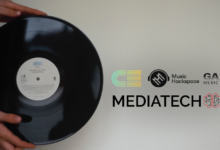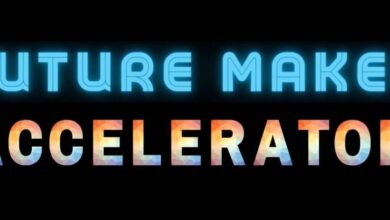
Meet the incredibly humble, brilliant AR tech trail blazer, Yaron Zakai-Or.
Yaron new from a young age that he wanted to be technologist, he started to teach himself how to code at the age of 13. His fascination with technology and a pursuit of excellence and mastery landed him director roles at companies like Microsoft, Ebay, and Facebook. Although these positions helped shape Yaron’s organization know how and development practices, he was still searching for a way to combine his technical talents with his love for art.
That opportunity finally came when some artistic colleagues approached Yaron to build what is now known as ARTI. Helping reshape how businesses and everyday consumers use augmented reality, Yaron hopes to demystify AR in your everyday video, while enabling more in depth and engaging storytelling. Find out how Yaron is helping reshape the future of AR, by putting an AR studio in your pocket.
Everybody gets inspired to go down a certain career path. There are things throughout their life that have, you know, kind of nudge them towards a certain direction. What got you into technology at a young age, eventually playing in the AR sandbox?
Yaron: I started programming when I was 13 years old. So it was like an after school activity that I participated in. And I didn’t think that I’m going to be a software engineer. I think that my parents really wanted me to be a physician, some family history stuff. And then as soon as I started programming, literally a couple of days after I wrote my first couple of lines of code in Basic, that was back then the software language for kids. I decided this is what I’m going to do in life. And fast forward at the age of slightly at 20, 21, 22, which is when you finish your army service in Israel. I started thinking, what am I really going to do, and then I kind of stumbled on an add on what back then used to be a pretty significant local company.
And they did computer graphics, two-dimensional computer graphics. I looked at it and said to myself, I’m fascinated with design, although I’m really a bad designer, and you don’t want to see any of my drawings or my paintings there. They stayed at the level that I was 12 years old. But this is fascinating. I love art. And I love technology, this is what I’m going to do. I studied computer science, studying mathematics and fell in love with 3d graphics. My first serious job was in that area. And since then I’ve done a bunch of things. I won’t bore you with the details, but none of them was 3d graphics. Most of them were connected somehow to machine learning, actually. And then, two years ago, a friend of mine whose name is Ido Lempert. He’s one of the co-founders of the party. He’s a creative person. He’s been doing reality projects for the last 10 plus years. One of the most notable things his studio did, along with his other partner, Dror Belkin. They did the Tour de France sandbox augmented reality sandbox, which was an Emmy nominee. And they both kind of raised the following question to myself, but there is a fourth co-founder, and that’s it. We don’t have any more for it’s great. They asked, can you make an augmented reality that actually costs something that all of our customers will be able to pay with? And that they won’t have a learning curve of weeks, which is what most of the current day art system for broadcasts are? And the answer was, yes, of course. Although I didn’t know anything about how can we actually make this thing happen? And this is how it started. And this is kind of my personal story.
What was it about AR that really fascinated you in perhaps it was just the complexity of it, and how to make it work and viable from a commercial viability standpoint. But what drew you into that? Or was it your partners primarily, that kind of started your journey down this path?
Yaron: So my partner’s ignited my initial interest, but what really caught me is years ago, I was a computer game enthusiast. So after hours, after work, I used to play computer games, I mean, now family, etc, my kids play computer games, I don’t do as much as I would love. I don’t have time being a startup CEO has an effect on your free time. So it’s really the ability to take the experience that you’re seeing computer graphics and marry it with the real world. That’s, that’s really what fascinated me what they are. I think that they are, has been around for many years, but it hasn’t really grown to be a major stage component of what people would like. And I was looking at the future, people that have been working on AR glasses, or if you’ve seen what has been done in the field, and if you see what’s being done in TV, their initial steps toward, towards what’s going to reimagine the world we live in we’ll look at a product, and we’ll get its price and product information as we look into it. As we look at it, etc, etc. You know, there’s going to be many, many use cases for AR.
And that’s really what fascinated me, specifically regarding Aki, what fascinated me was the ability to do it today. So there is a huge technical challenge in doing what looks very natural here. But it’s doable. And like, if you look at all the classes efforts, they’re still in baby steps, it still hasn’t matured it still hasn’t become something that you and I can use on a daily basis.
Explain to me now first of all, how you came up with the name Arti what that comes from, obviously there’s AR and it but I’m curious about the backstory on that and why you are focused primarily on this kind of PowerPoint type of experience for users.
Yaron: I’m stuck with the Arti name, which is an easy one. So we wanted to come up with a name. And we have, I don’t remember maybe 10 ideas. And Arti has an AR in it. It has art in it. And it sounds cute. That’s basically the rd name. There’s no I mean, those are not acronyms for anything. It’s just it sounded cute and memorable. So it all the things you need to have in the name. So So now when you relate to PowerPoint, or Google Slides or keynote, whatever you love working with in order to create your presentations. The power of these tools is that everyone can work with them. You don’t need to be a presentations expert for it to be a graphics expert. And when we look into the AR world, one of the things that are holding our back, you mentioned phone, so yeah, I mean, I can lift my phone and look up Pokemon here on my table. But that’s a one-time thing. I cannot create really experiences, I cannot create stories, which is mean, at the end of the day, what you and I are doing right now we’re telling stories, and human nature is all about telling stories, we want to tell engaging stories, AR lets us tell stories in an engaging way that hasn’t been available so far. But for that, you need the content creation platform. And this is why we thought that being the PowerPoint or Google Slides of AR is truly one of the sweet spots that we need to focus on.
How, do you see Arti evolving as glasses become more available, or are you going to stay in your lane and really focus on your niche? Or do you have plans to expand beyond the PowerPoint type of drag and drop?
Yaron: So it’s a very important strategic question for us, glasses are going to become a thing none of us know whether that’s going to stay the year two or three years, or maybe more, no one knows. But what we all know is that it’s going to happen to many people too many brilliant people in too many brilliant companies are actually working on it. And that means it’s going to happen, like autonomous cars, again, tough to crack technology, but someone is going to make it happen. Now, the question is, who’s going to be the content creation tool for those environments? And you raised a very important question for us, we want to stay a niche solution that caters only to professional, I would say, upper-middle, or upper-level professional video creators, which is really where we’re focused now. The answer is, of course, we want to cater to a lot more and we want to be that PowerPoint of AR that will enable you to get your story in front of people in multiple ways. It can be the way that we’re doing today which is on video. It can be in your glasses. Think about the experience of people coming into a conference or even watching conferences from their house with their glasses and getting an experience that has aspects of it that are personalized to them. The imagination there can be no there’s no glass leading tool. And I think that there’s a huge opportunity there. And I think that we will be in a great position to become a major player in that space.
So when people think of Arti.tv, what are you hoping comes to mind for them?
Yaron: Three words affordable, easy, and everywhere. So it’s something that you don’t need to be a rich media house to buy. It’s something that I’m going to be right now to actually go and see the next slide. So it’s simple. You don’t need to spend time learning it. And, of course, you can put everywhere, you don’t need to have specific hardware, you don’t have a sophisticated setup, just a camera, and a laptop. And that’s it.
How do you decide as a company what those available templates are? And how robust in continuing developing those templates, what does that look like in the future?
Yaron: One of our key differentiators as a company, is the fact that we’re four co-founders, half of the count of the CO founding team is our creative people. So you don’t drawer that have together a couple of dozens of years in the broadcast industry, and in the industry on the video side. They have tons of experience, they actually knew what’s the MVP while we were kind of thinking, what is the MVP. So they predicted what our customers are going to ask last promise, way before our customers did that. And we’re basically following up on their experience. And making sure that the set of templates that we have, will cover the basics. So that’s step number one, of course, then you have to listen to customers and what we get from customer’s requests. Can you do this? Or can you do that? One small example is, can you play a video on a phone, which is a recording of the screen. And that was a request for a new template, we looked at and said, many people would probably want to do it that enables you to show your Twitter feed enables you to show if you’re selling an application, you can show the application next to you. And people can actually see what’s happening on the screen. So it’s a combination of we had a very good initial set of templates. And then, and then we’re listening to our customer requirements. And looking at what our customers do those are creative people, we learn from them, and then generalize that and create new features.
Who are some of the people that inspire you, everybody has books that they read that they go back to podcasts that they listen to peers, or people they look up to in their industry what are those sources look like for you?
Yaron: So I’ll start with it’s a cliche, I know. But from product experience, and as an entrepreneur, especially in his second round in Apple, Steve Jobs definitely I look at what he did there, and it’s just phenomenal. If I can do a small fraction of what he achieved, that’s going to be incredible, so that’s one inspiration, as a product person, then, I am following another, I would say, more recent experience when thinking about how to manage a company, and how to make people improve the way they do things on an ongoing basis. I follow Carol Dweck. Carol is a professor of psychology at Stanford, and she wrote the book mindset, which really talks about embrace failure put failure as something that you actually see, as part of the experience that you understand, I’m going to fail in part of what I’m doing. And that’s totally fine, because that’s going to be a learning experience for me, and I’m going to improve myself, and I’m going to do some of the things I’m used to getting done in a very different way. And, therefore create, better me on an ongoing basis.
Now, that leads me into, when you look at the way people think about atra development, but in a very big way. So atra development has been, has been kind of been the thing in the past almost 20 years. But it has been a process in a shallow manner. For many people. When you combine it with the mindset theory that Carol Dweck has developed, then you get something really deep, you get something that you improve, not just yourself, but to improve the way your company works. Your team works on an ongoing basis. That’s kind of the two key people that I’m thinking about are these.
How do you balance enterprise and consumer needs, when it comes to Arti’s capabilities? Is it focused just on the idea of improving content?
Yaron: So we’re, we’re very focused on being a b2b company these days. I think that still today, getting people to really the consumer to adopt technology like this. There are I mean, they’re not. I wouldn’t even talk about the technical challenges of using this. There is that simple challenge of I need to have a camera that is on a tripod that is connected to a PC, etc, etc. Like, the basic setup is something that most likely you need to be a prosumer of the video creator. So I think that the minimum in terms of people that will be able to use it are individual video creators that, you know, create some stuff for YouTube, Facebook Live or Instagram, but not the standard consumer. That’s a piece for now. I think that the ability for the consumer to actually enjoy this is going to be once the will be glasses outside. And then it’s going to be the consumer actually using this in terms of they seen presentations that someone else did, you do need to have a little bit of anesthetic mindset, and a little bit knowledge of how things move in reality, in order to get these things done today. We might surprise ourselves a couple of years from now, but that’s still, on the longer-term roadmap not for the short term.
When it comes to AR, one of the things that I’m most excited about is being able to use my hands to interact with the images in my surrounding. Is that a capability on the roadmap for Arti, to be able to to either swipe the images with your hands I’m thinking more of that futuristic lab with all the floating stuff in front of me. Is that a thing, or is this always going to be powered by the capabilities from the processing power of the phone, and not using my hands to change stuff in real-time.
Yaron: I do strongly believe that one of the things that we should do probably even next year is to start working on some hand gesture recognition and interaction. Like, the probably the most intuitive thing is, next slide, or some sort of the hints that will tell the software that it needs to swipe to the next slide, that’s, that’s going to be, a great way of helping presenters have even a more natural interaction with their own presentation. Of course, what I’d love to do is the ability to actually take a 3d object and move it, we do have something like that, that will actually do a quick pause at the end of the presentation, and I’ll show you how we can actually control some of the stuff using hands, but it’s very limited, we are going to work on it soon.
If you had a superhero power, what would it be?
Yaron: It’s a tough one. I think that it’s going to sound really weird. I’d like to be a mo wizkid. That’s my true passion. And I’ve been working with top-notch machine learning or data scientists. And I would love to be as good as the best people I’ve worked with. That’s the superpower I would love to have.
How do people get a hold of you?
Yaron: So to get hold of the company [email protected] or contact us on any of us social outlets, were very responsive there. In order to contact me personally, just look for Yaron Zakai-or or on LinkedIn, reach out to me on message, and I’ll respond to you within the next day or so. So I’m pretty responsive there.
To keep up-to-date with community spotlights and more, subscribe to our weekly newsletter here.






